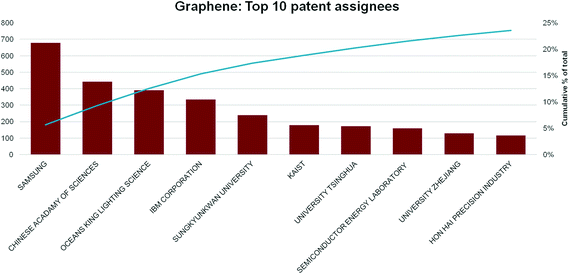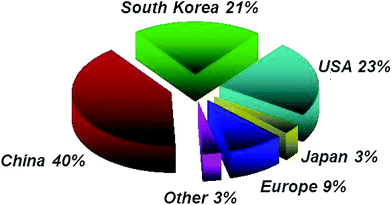I have two items concerning research which seeks to replace graphene in one application or other.
Black phosporus and the École Polytechniqe de Montréal
A June 2, 2015 news item on Nanotechnology Now features work on developing a two-dimensional black phosphorus material, 2D phosphane,
A team of researchers from Universite de Montreal, Polytechnique Montreal and the Centre national de la recherche scientifique (CNRS) in France is the first to succeed in preventing two-dimensional layers of black phosphorus from oxidating. In so doing, they have opened the doors to exploiting their striking properties in a number of electronic and optoelectronic devices. …
Black phosphorus, a stable allotrope of phosphorus that presents a lamellar structure similar to that of graphite, has recently begun to capture the attention of physicists and materials researchers. It is possible to obtain single atomic layers from it, which researchers call 2D phosphane. A cousin of the widely publicized graphene, 2D phosphane brings together two very sought-after properties for device design.
A June 2, 2015 École Polytechniqe de Montréal news release, which originated the news item, expands on why 2D phosphane is an appealing material,
First, 2D phosphane is a semiconductor material that provides the necessary characteristics for making transistors and processors. With its high-mobility, it is estimated that 2D phosphane could form the basis for electronics that is both high-performance and low-cost.
Furthermore, this new material features a second, even more distinctive, characteristic: its interaction with light depends on the number of atomic layers used. One monolayer will emit red light, whereas a thicker sample will emit into the infrared. This variation makes it possible to manufacture a wide range of optoelectronic devices, such as lasers or detectors, in a strategic fraction of the electromagnetic spectrum.
The news release goes on to describe an important issue with phosphane and how the scientists addressed it,
Until now, the study of 2D phosphane’s properties was slowed by a major problem: in ambient conditions, very thin layers of the material would degrade, to the point of compromising its future in the industry despite its promising potential.
As such, the research team has made a major step forward by succeeding in determining the physical mechanisms at play in this degradation, and in identifying the key elements that lead to the layers’ oxidation.
“We have demonstrated that 2D phosphane undergoes oxidation under ambient conditions, caused jointly by the presence of oxygen, water and light. We have also characterized the phenomenon’s evolution over time by using electron beam spectroscopy and Raman spectroscopy,” reports Professor Richard Martel of Université de Montréal’s Department of Chemistry.
Next, the researchers developed an efficient procedure for producing these very fragile single-atom layers and keeping them intact.
“We were able to study the vibration modes of the atoms in this new material. Since earlier studies had been carried out on heavily degraded materials, we revealed the as-yet-unsuspected effects of quantum confinement on atoms’ vibration modes,” notes Professor Sébastien Francoeur of Polytechnique’s Department of Engineering Physics.
The study’s results will help the world scientific community develop 2D phosphane’s very special properties with the aim of developing new nanotechnologies that could give rise to high-performance microprocessors, lasers, solar cells and more.
Here’s a link to and a citation for the paper,
Photooxidation and quantum confinement effects in exfoliated black phosphorus by Alexandre Favron, Etienne Gaufrès, Frédéric Fossard, Anne-Laurence Phaneuf-L’Heureux, Nathalie Y-W. Tang, Pierre L. Lévesque, Annick Loiseau, Richard Leonelli, Sébastien Francoeur, & Richard Martel. Nature Materials (2015) doi:10.1038/nmat4299 Published online 25 May 2015
This paper is behind a paywall.
Now. for the second item about replacing graphene.
China’s new aerogel, a rival to graphene aerogels?
A June 2, 2015 American Institute of Physics news release (also on EurekAlert) describes research into an alternative to expensive graphene aerogels,
The electromagnetic radiation discharged by electronic equipment and devices is known to hinder their smooth operation. Conventional materials used today to shield from incoming electromagnetic waves tend to be sheets of metal or composites, which rely on reflection as a shielding mechanism.
But now, materials such as graphene aerogels are gaining traction as more desirable alternatives because they act as electromagnetic absorbers. They’re widely expected to improve energy storage, sensors, nanoelectronics, catalysis and separations, but graphene aerogels are prohibitively expensive and difficult to produce for large-scale applications because of the complicated purification and functionalization steps involved in their fabrication.
So a team of researchers in China set out to design a cheaper material with properties similar to a graphene aerogel–in terms of its conductivity, as well as a lightweight, anticorrosive, porous structure. In the journal Applied Physics Letters, from AIP Publishing, the researchers describe the new material they created and its performance.
Aming Xie, an expert in organic chemistry, and Fan Wu, both affiliated with PLA University of Science and Technology, worked with colleagues at Nanjing University of Science and Technology to tap into organic chemistry and conducting polymers to fabricate a three-dimensional (3-D) polypyrrole (PPy) aerogel-based electromagnetic absorber.
They chose to concentrate on this method because it enables them to “regulate the density and dielectric property of conducting polymers through the formation of pores during the oxidation polymerization of the pyrrole monomer,” explained Wu.
And the fabrication process is a simple one. “It requires only four common chemical reagents: pyrrole, ferric chloride (FeCl3), ethanol and water — which makes it cheap enough and enables large-scale fabrication,” Wu said. “We’re also able to pour the FeCl3 solution directly into the pyrrole solution — not drop by drop — to force the pyrrole to polymerize into a 3-D aerogel rather than PPy particles.”
In short, the team’s 3-D PPy aerogel is designed to exhibit “desirable properties such as a porous structure and low density,” Wu noted.
Beyond that, its electromagnetic absorption performance — with low loss — shows great promise. “We believe a ‘wide’ absorption range is more useful than high absorption within one frequency,” Wu said. Compared with previous works, the team’s new aerogel has the lowest adjunction and widest effective bandwidth — with a reflection loss below -10 decibels.
In terms of applications, based on the combination of low adjunction and a “wide” effective bandwidth, the researchers expect to see their 3-D PPy aerogel used in surface coatings for aircraft.
Another potential application is as coatings within the realm of corrosion prevention and control. “Common anticorrosion coatings contain a large amount of zinc (70 to 80 percent by weight), and these particles not only serve as a cathode by corroding to protect the iron structure but also to maintain a suitable conductivity for the electrochemistry process,” Wu pointed out. “If our 3-D PPy aerogel could build a conductivity network in this type of coating, the loss of zinc particles could be rapidly reduced.”
The team is now taking their work a step further by pursuing a 3-D PPy/PEDOT-based (poly(3,4-ethylenedioxythiophene) electromagnetic absorber. “Our goal is to grow solid-state polymerized PEDOT particles in the holes of the 3-D PPy aerogel formed by PPy chains,” Wu added.
Here’s a link to and a citation for the paper,
Self-assembled ultralight three-dimensional polypyrrole aerogel for effective electromagnetic absorption by Aming Xie, Fan Wu, Mengxiao Sun, Xiaoqing Dai, Zhuanghu Xu, Yanyu Qiu, Yuan Wang, and Mingyang Wang. Appl. Phys. Lett. 106, 222902 (2015); http://dx.doi.org/10.1063/1.4921180
This paper is open access.

![[similar]](http://www.rsc.org/images/entities/char_223c.gif) 50%) of total patent filings: the other half comprises contributions from small and medium-sized enterprises (SMEs) and multinationals.
50%) of total patent filings: the other half comprises contributions from small and medium-sized enterprises (SMEs) and multinationals.
![Fig. 122 The STRs [science and technology roadmaps] follow a hierarchical structure where the strategic level in a) is connected to the more detailed roadmap shown in b). These general roadmaps are the condensed form of the topical roadmaps presented in the previous sections, and give technological targets for key applications to become commercially competitive and the forecasts for when the targets are predicted to be met. Courtesy: Researchers and the Royal Society's journal, Nanoscale](http://www.frogheart.ca/wp-content/uploads/2015/02/Euroepan-Graphene-Roadmap-203x300.gif)